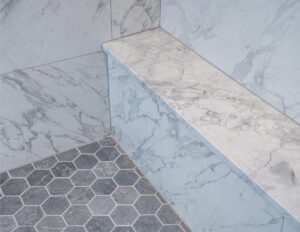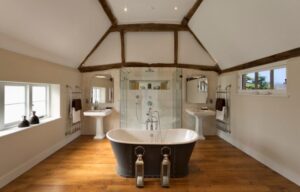Let’s Talk Siding: The Good, The Bad, and The “Wait, That’s Made of What?
Hey there, home enthusiasts! Let’s cut to the chase: picking siding for your house is like choosing a superhero costume—it needs to look cool, handle the elements, and not make you regret your life choices in five years. Whether you’re sprucing up a bungalow or tackling luxury home renovations, the right siding can make or break your home’s curb appeal (and your sanity). Here at Verified Builders in Denver, we’ve seen it all—from vinyl that’s survived hailstorms to wood siding that… well, let’s just say termites threw a party. Let’s break down your options, no jargon allowed.
Contents
- 1 Vinyl Siding: The Crowd-Pleaser
- 2 Fiber Cement: The Overachiever
- 3 Wood Siding: The Classic Beauty (With Baggage)
- 4 Metal Siding: The Sleek Contender
- 5 Stucco & Brick: The Old-School Heavyweights
- 6 So… Which Siding Should You Choose?
- 7 Siding Showdown: Quick Comparison
- 8 4 Siding Questions You’re Too Embarrassed to Ask
- 9 Why Verified Builders? We’re Not Just “Another Denver Contractor”
- 10 Ready to Transform Your Home’s Exterior?
Vinyl Siding: The Crowd-Pleaser
“But isn’t vinyl just… plastic?” Glad you asked. Yes, but it’s the Swiss Army knife of siding.
Pros:
- Budget-friendly: Your wallet won’t scream.
- Low maintenance: Hose it down and call it a day.
- Endless colors: Want a lavender farmhouse? Go nuts.
Cons:
- Durability: A rogue baseball will leave a mark.
- Heat sensitivity: Denver summers can warp cheaper grades.
FYI, we’ve used vinyl in interior remodeling projects where clients want cohesive indoor-outdoor vibes. It’s not just for exteriors!
Fiber Cement: The Overachiever
Imagine if concrete and paper had a baby. Meet fiber cement: tough, fire-resistant, and oddly stylish.
Pros:
- Weatherproof: Hail, wind, UV rays? Bring it.
- Aesthetic flexibility: Mimics wood, stucco, or even brick.
- Longevity: Lasts 30+ years with minimal fuss.
Cons:
- Installation costs: Heavy stuff—you’ll need pros like Verified Builders (hint, hint).
- Paint upkeep: Repaint every 10–15 years.
Perfect for custom home remodeling where durability meets design.
Wood Siding: The Classic Beauty (With Baggage)
Ah, wood. It’s like dating a supermodel—high maintenance but so pretty.
Pros:
- Timeless appeal: Instantly boosts home value.
- Eco-friendly: Biodegradable and renewable.
Cons:
- Upkeep: Regular staining, sealing, and praying for no pests.
- Cost: Cedar and redwood aren’t cheap, folks.
We’ve rescued Denver homes with home restoration projects where original wood siding was worth saving. But IMO, only tackle this if you’re committed to the long game.
Metal Siding: The Sleek Contender
Steel or aluminum? Either way, it’s the James Bond of siding—sleek, tough, and a bit too cool.
Pros:
- Fire/rot/pest-proof: Basically invincible.
- Modern vibe: Ideal for design build construction.
Cons:
- Denting: Hailstorms = bad news.
- Noise: Rainstorms sound like a drum solo.
Great for home additions where you want a modern edge.
Stucco & Brick: The Old-School Heavyweights
Stucco’s the Mediterranean dream; brick’s the timeless charmer. Both scream, “I’ve been here forever, and I’ll outlive you.”
Pros:
- Durability: Centuries-old homes prove it.
- Insulation: Keeps Denver winters at bay.
Cons:
- Cost: Brick’s pricey, and stucco cracks over time.
- Installation complexity: Not a DIY project.
We paired stucco with luxury home renovations in Cherry Creek—total showstopper.
So… Which Siding Should You Choose?
Let’s get real. Your decision hinges on:
- Budget: Vinyl = thrifty; brick = splurge.
- Climate: Denver’s mood swings demand durable picks.
- Aesthetic Goals: Subtle charm or bold statement?
And hey, if you’re also juggling kitchen remodeling services or need basement contractors, why not bundle projects? Verified Builders handles whole home remodeling so you’re not coordinating 10 different crews.
Siding Showdown: Quick Comparison
| Type | Cost (per sq ft) | Durability | Maintenance | Best For |
|---|---|---|---|---|
| Vinyl | $2–$7 | Moderate | Low | Budget-friendly |
| Fiber Cement | $5–$12 | High | Medium | Custom looks |
| Wood | $6–$14 | Medium | High | Traditional homes |
| Metal | $4–$10 | High | Low | Modern designs |
| Stucco/Brick | $7–$20+ | Very High | Low/Medium | Luxury builds |
4 Siding Questions You’re Too Embarrassed to Ask
1. “Can I install siding myself?”
Unless you’re a pro, nope. Improper installation leads to leaks, drafts, and expensive regrets. Leave it to a home remodeling company like ours.
2. “How often should siding be replaced?”
Vinyl: 20–40 years. Fiber cement: 50+. Wood: 20–40 (with TLC). When in doubt, poke it. If it crumbles, call us.
3. “Does siding affect energy bills?”
Absolutely! Insulated vinyl or thick stucco = lower HVAC costs. Bonus: some materials qualify for tax credits.
4. “What if I hate my current siding?”
We’ve done home renovation miracles. Swapping siding can boost resale value by up to 10%.
Why Verified Builders? We’re Not Just “Another Denver Contractor”
Look, siding’s a big deal—it’s your home’s armor. At Verified Builders, we blend expertise with Denver-specific know-how. Need a home addition contractor who also nails siding? Check. Planning interior remodeling and want exterior flair? Done. We’re your one-stop shop for everything, from home restoration to design build construction.
And because we’re local (“near me” SEO win!), we get Denver’s quirks: altitude sun, hailstorms, and that one week of “spring.”
Ready to Transform Your Home’s Exterior?
Whether you’re siding-curious or knee-deep in whole home remodeling, we’re here to help. Drop us a line at Verified Builders, and let’s make your house the envy of the block. (Or at least stop the HOA from sending angry letters.)
Later, siding warriors! 🏡✨
P.S. If you’re still debating materials, just ask us. We’ve got opinions—and the dad jokes are free.


